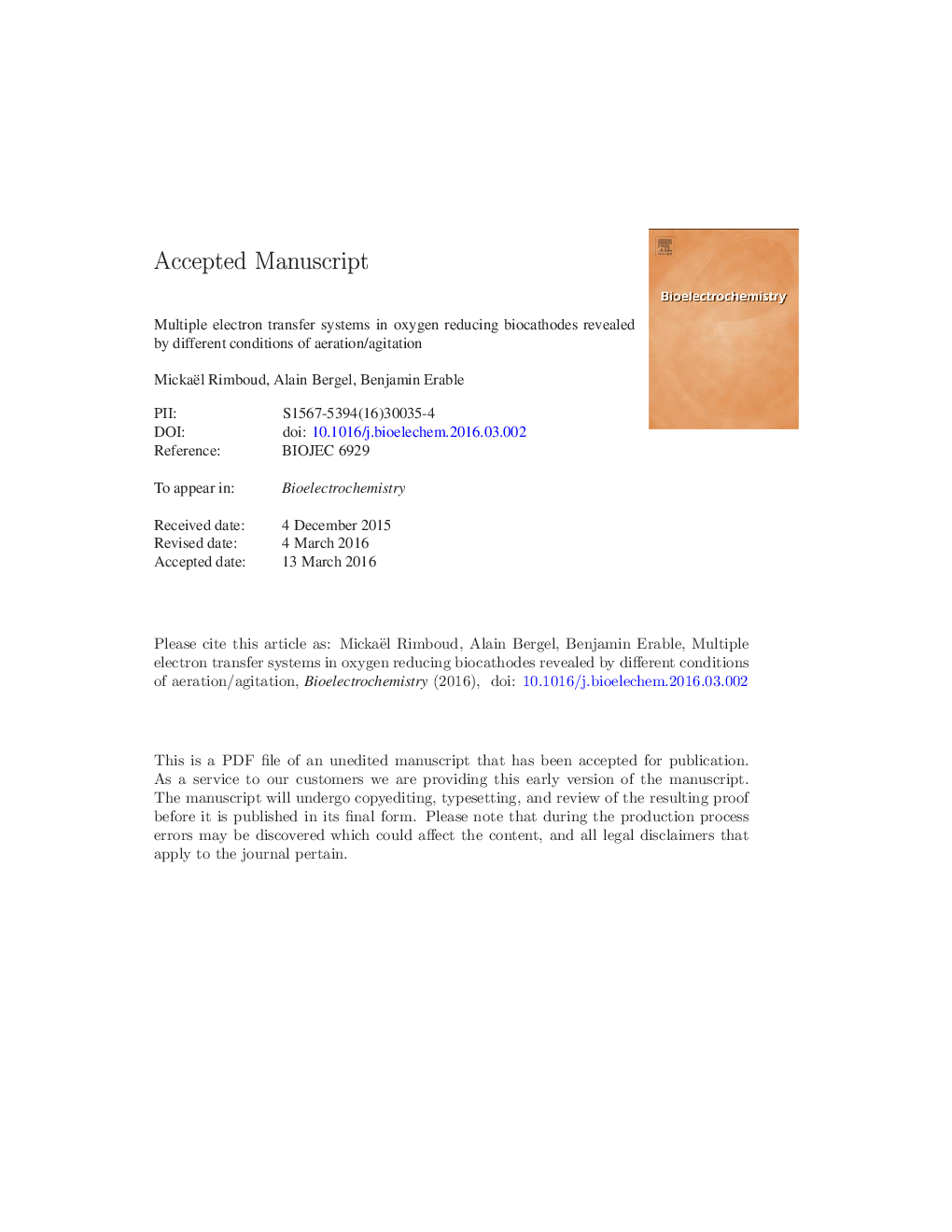| Article ID | Journal | Published Year | Pages | File Type |
|---|---|---|---|---|
| 7704916 | Bioelectrochemistry | 2016 | 25 Pages |
Abstract
Oxygen reducing biocathodes were formed at â 0.2 V/SCE (+ 0.04 V/SHE) from compost leachate. Depending on whether aeration was implemented or not, two different redox systems responsible for the electrocatalysis of oxygen reduction were evidenced. System I was observed at low potential (â 0.03 V/SHE) on cyclic voltammetries (CVs). It appeared during the early formation of the biocathode (few hours) and resisted the hydrodynamic conditions induced by the aeration. System II was observed at higher potential on CV (+ 0.46 V/SHE); it required a longer lag time (up to 10 days) and quiescent conditions to produce an electrochemical signal. The hydrodynamic effects produced by the forced aeration led to its extinction. From their different behaviors and examples in the literature, system I was identified as being a membrane-bound cytochrome-related molecule, while system II was identified as a soluble redox mediator excreted by the biofilm. This study highlighted the importance of controlling the local hydrodynamics to design efficient oxygen reducing biocathodes able to operate at high potential.
Related Topics
Physical Sciences and Engineering
Chemistry
Electrochemistry
Authors
Mickaël Rimboud, Alain Bergel, Benjamin Erable,
